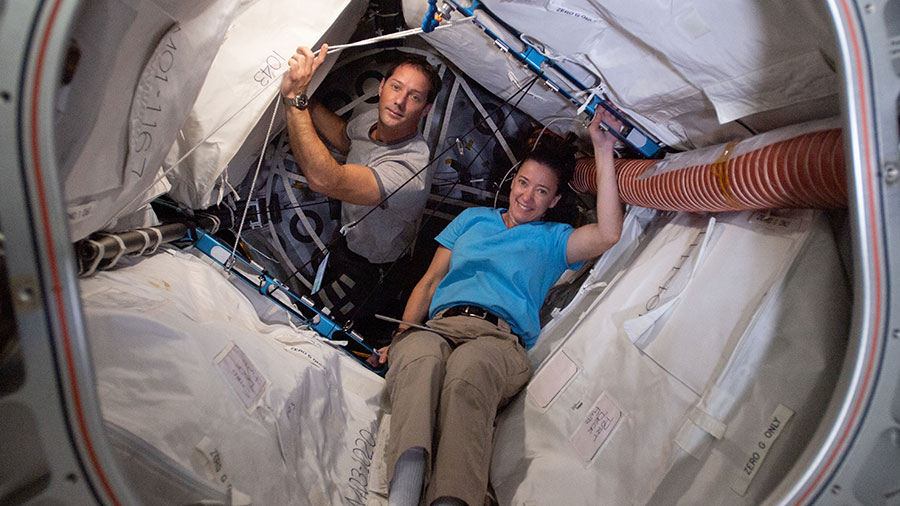U.S. and Russian Spacewalk Preps, Human Research Aboard Station Today

Spacewalk preparations and biomedical research filled the Expedition 65 schedule on Tuesday. The International Space Station also continues to host a variety of maintenance on science and plumbing systems.
ESA Flight Engineer Thomas Pesquet checked out U.S. spacesuit components ahead of a pair of spacewalks to install new solar arrays on the Port-6 truss structure planned for June. Those solar arrays, the first two of six targeted for installation, will be launched to the station aboard the next SpaceX Dragon mission on June 3.
Commander Akihiko Hoshide worked throughout the day collecting his biological samples and stowing them in science freezers for a pair of human research studies. The Phospho-Aging study looks at rapid bone and muscle loss while the Vascular Aging experiment observes aging-like changes in arteries that take place in microgravity.
Another human research study, the Standard Measures investigation that NASA Flight Engineer Megan McArthur contributed to today, observes and documents the changes to the human body during a long-term spaceflight. McArthur also installed and configured hardware inside the Combustion Integrated Rack to support safe research into fuels and flames on the space station.
In the Tranquility module, NASA Flight Engineer Shane Kimbrough spent the day on orbital plumbing duties. He was assisted throughout Tuesday by Pesquet and NASA Flight Engineer Mark Vande Hei as they serviced the Water Processing Assembly (WPA) to repair a possible leak.
Cosmonauts Oleg Novitskiy and Pyotr Dubrov reviewed procedures for an upcoming spacewalk planned for June 2 for external maintenance and science experiment installations. The duo also partnered up for cardiac research before moving on to communications and systems maintenance in the orbiting lab’s Russian segment.
Maintenance for the WPA in the Tranquility module of the station occurred today as crew members removed the affected parts and configured ducting to perform a dryout of the lines. Maintenance will continue tomorrow with the installation of the replacement units and additional preventative maintenance to restore the hardware to its full functionality.
The WPA was powered off last week due to a suspected leak. This hardware is used to recycle water from multiple sources into clean, drinkable water for crew members aboard the International Space Station.
The crew is in no danger and has multiple spare parts on board to complete the repair process. There is enough water stored on the space station to provide the crew with the necessary consumables for several months if required.
The space station serves a vital role in testing and maturing life support technologies that will be required for future missions to the Moon and Mars. Repairs provide invaluable data to engineers refining these systems for use in future spacecraft and missions.
from Space Station https://ift.tt/33VQg1e
Comments
Post a Comment